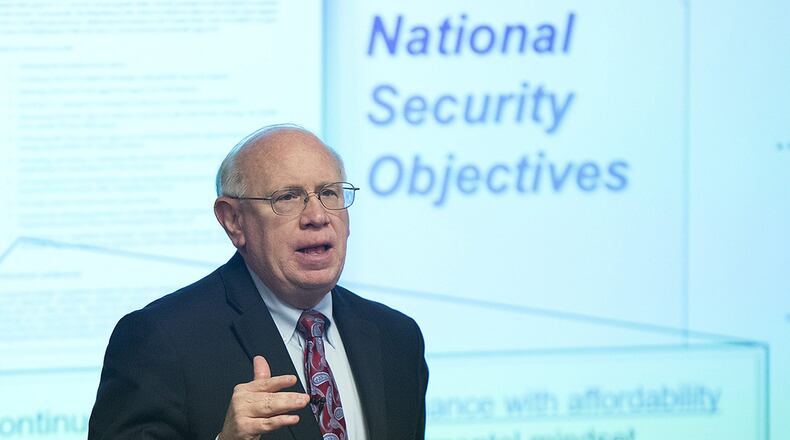“We’re trying to make sure that the learning that comes with enterprise sourcing – the analytics, the decision making, the comprehensive analysis – [is shared] so that we can drive better decisions for our commanders,’ said Brig. Gen. Alice W. Treviño, AFICA commander, who also delivered the summit’s opening remarks. “It’s about changing the culture and making sure that they’re learning those behaviors because if one person knows it, that’s great. But, if a hundred know it, that’s even better.”
While the push for enterprise sourcing is relatively young, Treviño said AFICA has been working on its program for five years and the initiative’s reach is wide.
“We talk about the Air Force. We talk about the Department of Defense. But, this is a whole of government initiative, led by the Office of Management and Budget,” said Richard Lombardi, deputy under secretary of the Air Force Management and deputy chief management officer, in his keynote address. “It’s more than just ‘the contract,’ and that’s something that we’ve had to really drive home to people. That, while the contract structure is very important, it’s not the sole thing. It’s getting the data and using that data to help inform the requirement and manage the demand. It’s using that data to look at policy. It’s looking at best practices.”
Enterprise sourcing and category management are ways of increasing efficiencies and saving money by acquiring goods and services at the enterprise level. For example, having the Air Force create standard configurations of office furniture, negotiate guaranteed pricing though manufacturers and provide small businesses with installation opportunities versus each individual base negotiating its own contracts.
This actual scenario led to a $20 million savings. Enterprise sourcing can be viewed as a holistic approach to finding the best possible solution to get the most capability out of the taxpayer’s dollar.
“It’s not just managing to a budget where if you stay within the confines of your budget, you’re good. It’s rather looking at your budget and determining how much mission capability can I deliver to the field for that,” said Steven Brady, AFICA Enterprise Acquisition Innovation branch chief. “If I can employ business intelligence and come up with creative ways to spend that budget more efficiently or effectively, I can get more mission capability for the field and then that translates to readiness and lethality for the Air Force.”
Professional networking is critical to gaining those efficiencies. Treviño said in her opening remarks that one of the main challenges of the summit for attendees was to meet as many other professionals as possible to begin a dialogue that could continue when participants returned to their home stations.
“I don’t think there’s anything more valuable than this – being able to get together,” said Nicole Shatto, a procurement analyst for strategic sourcing at AFICA’s operating office at Ramstein Air Base, Germany.
Shatto described how she was finally able to meet a person she has been working with for more than a year on a project at the summit.
“The opportunity to finally put a face to a name is really invaluable in the day-to-day work that we do,” Shatto said. “And the briefings and presentations for us are a good opportunity for continuing education, to keep learning about what’s up and coming, and to hear from senior leadership. I think [enterprise sourcing is] long overdue and I’m excited to hear that the Air Force is at the forefront of it.”
Shatto said that her location alone has saved roughly $35 million since they started implementing the tools developed for enterprise sourcing.
About the Author
